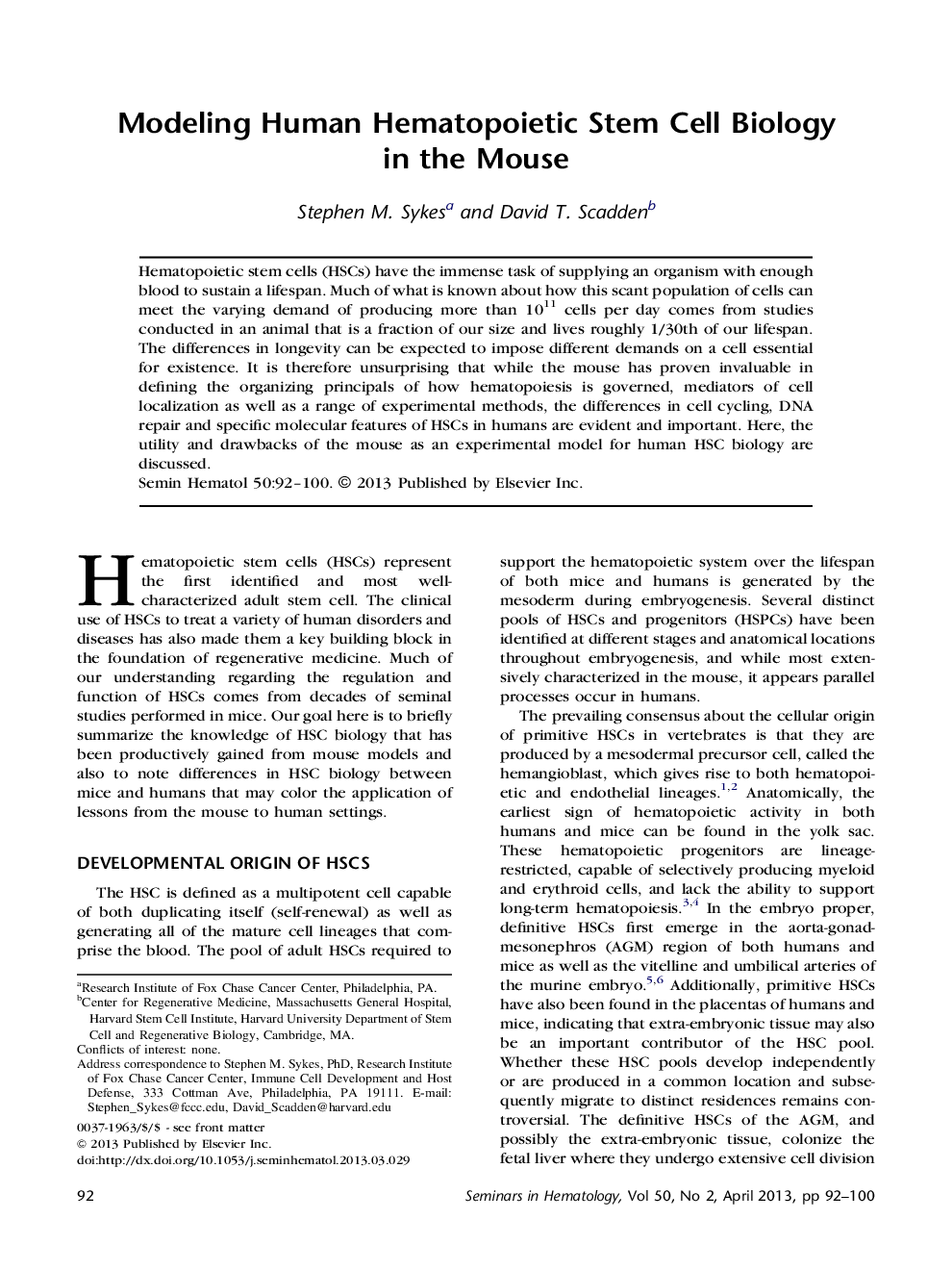| Article ID | Journal | Published Year | Pages | File Type |
|---|---|---|---|---|
| 6113780 | Seminars in Hematology | 2013 | 9 Pages |
Abstract
Hematopoietic stem cells (HSCs) have the immense task of supplying an organism with enough blood to sustain a lifespan. Much of what is known about how this scant population of cells can meet the varying demand of producing more than 1011 cells per day comes from studies conducted in an animal that is a fraction of our size and lives roughly 1/30th of our lifespan. The differences in longevity can be expected to impose different demands on a cell essential for existence. It is therefore unsurprising that while the mouse has proven invaluable in defining the organizing principals of how hematopoiesis is governed, mediators of cell localization as well as a range of experimental methods, the differences in cell cycling, DNA repair and specific molecular features of HSCs in humans are evident and important. Here, the utility and drawbacks of the mouse as an experimental model for human HSC biology are discussed.
Related Topics
Health Sciences
Medicine and Dentistry
Hematology
Authors
Stephen M. Sykes, David T. Scadden,
